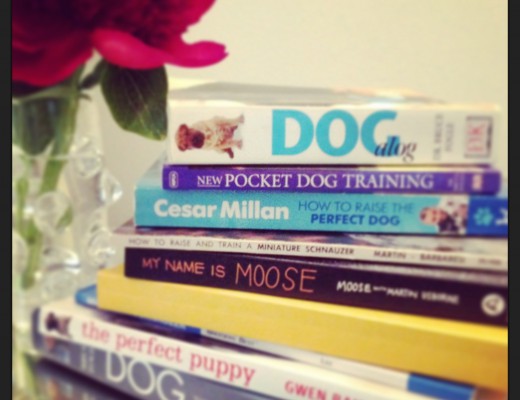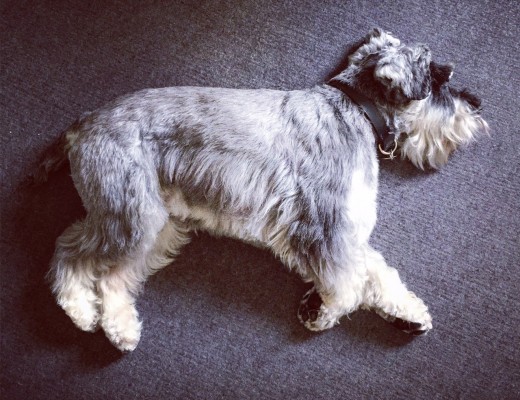Two weeks ago my friend took Fudge, her gentle Cavalier King Charles Spaniel, for a light morning stroll. They walked through the park, Fudge on his lead. A large dog – a Labrador-mix – charged up to Fudge and attacked him without preamble.
What did my friend do? It all happened so quickly that all she could think was to shout to the dog’s owner as she tried to drag Fudge away. The owner and her friends had to pull the dog off of Fudge who was left inert and bleeding on the floor. Fudge was taken to the emergency vet and went straight into surgery. He was eventually sent home with a drain for two bites in his side and chest. He’s now, understandably, a nervous wreck.
Shocking for Fudge, shocking for all who witnessed him being shaken about like a rag doll– including the attacking dog’s owners who said, “He’s never done this before.”
My friend wondered if she could have done anything to avoid the situation. I asked Kevin-the-Trainer. “It’s often the case that dogs off-lead have a much better chance in an aggressive encounter than a dog held on a lead,” says dog trainer and behaviourist for the Mayhew Dogs Home, Kevin McNicholas. “Picking up dogs often exposes the owner to injury and makes the held-up dog more of a target.” If you have the presence of mind, and can see the situation coming, then Kevin advises, “Throwing a coat or jumper over your small dog and then picking it up. It makes your dog ‘disappear’ to the attacking dog.”
Anyone who has seen dogs skirmish will know that using your hands to separate them is dangerous not to mention difficult because it’s all so fast-moving (although I do know a woman who took hold of the rear end of the dog attacking her Schnauzer/Pug mix and gave him the ultimate cool-off by chucking him into a pond on Hampstead Heath). Fudge’s attacker was a big dog, eventually hauled off by his collar – it took two men to do it.
“If your dog is injured or in pain after an incident with another dog, see a vet as puncture wounds can get infected very fast,” advises Kevin.
After she had calmed down, and before she’d carried Fudge to the car and straight to the vet, my friend took the owner’s details. She called later to explain that Fudge had to have near-on £1000-worth of surgery. Unfortunately no apology was given, no hint of paying the vet bills or subsequent dog training were suggested. Keen to stop a repeat performance, my friend reported the incident to the police. She chased it up two times and chased-up the Community Police two times. Still no feedback. Perhaps used to this response, Kevin advises a thorough approach. In 35 years of working with dogs and owners, he’s finely honed the process: “Any evidence you have should be recorded (use your smart phone or a pen and paper to write down the facts – date, time, description of dog and owner, where and when, any witnesses with their contact details). Report the incident to the local police and get a crime number. Follow that up with a recorded delivery, signed-for letter to the Police Borough Commander in the area where the dog attack occurred (a Google search will reveal the name and contact address for the correct person). Include the crime number and all evidence that you have collected, with a copy of any witness and vet reports. Ask the Commander what is going to be done about this Dangerous Dog and await your reply. A similar recorded delivery letter can be sent to the Chief Executive of the Council in the area where the attack occurred. If you don’t get a reasonable reply in two weeks then contact you Member of Parliament and ask them to investigate on your behalf.” It’s a lot of legwork.
“Sometimes owners of aggressive dogs do not “see it” in their dogs, they confuse aggression with play. But whether you own a large dog or a tiny one and however placid and friendly your dog is, the Dangerous Dogs Act applies to you. Under the Act, it’s illegal for a dog to be ‘out of control’ or to bite or attack someone. The legislation also makes it an offence if a person is worried or afraid (the term is ‘reasonable apprehension’), that’s before a bite or attack has occurred. So, ensure that your dog is kept under control at all times and in all places.”
And finally, if your dog is the aggressor, Kevin has some advice. “Control your dog, don’t allow it to start things off. Work hard to achieve a great recall. Food can sometimes be a catalyst for dogs to fight, it can attract other dogs and they might be more aggressive because there are high value rewards around. Toys and balls are sometimes less attractive to other dogs so try to use games as well as food in training.”


